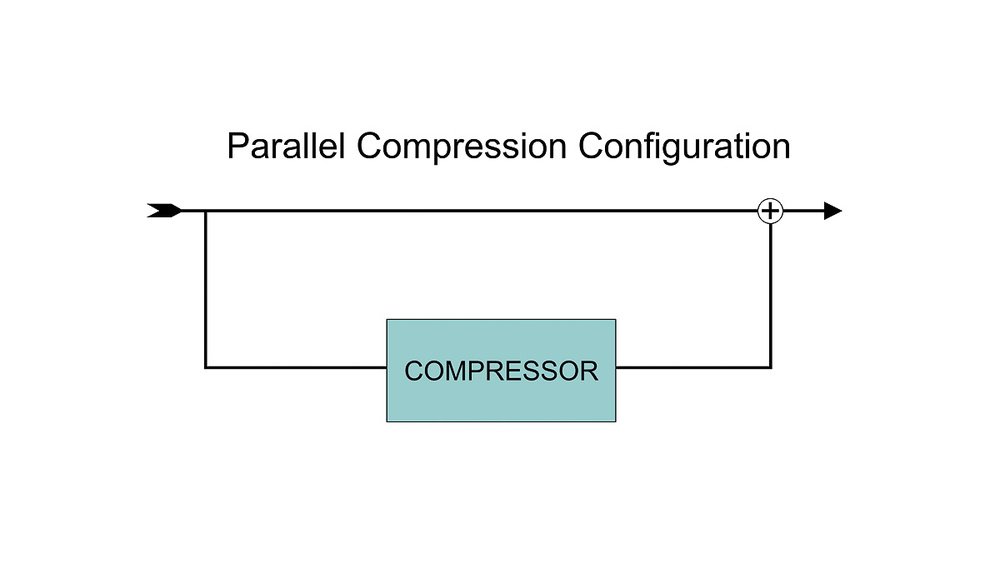Parallel Compression: Elevating Your Mixes to New Heights
Introduction
Parallel compression, also known as "New York compression" or "parallel processing," is a widely-used technique in the music production world that can add depth, punch, and dynamics to your mixes. In this blog post, we'll delve into what parallel compression is, how it works, and provide practical insights into how to use it effectively as a music producer.
What Is Parallel Compression?
Parallel compression is a mixing technique where you blend a heavily compressed version of a signal (usually an instrument or a mix bus) with the dry, uncompressed signal. The purpose of parallel compression is to retain the natural dynamics and transients of the original audio while adding sustain, impact, and character from the heavily compressed version. This technique allows you to achieve a balanced and controlled sound without sacrificing the excitement and energy of the performance.
How Does Parallel Compression Work?
Parallel compression is a two-step process:
Splitting the Signal: First, you create two signal paths from the source audio. One path remains dry (uncompressed), while the other is sent through a compressor with aggressive settings. The uncompressed path maintains the original dynamics and transients, while the compressed path provides the desired character and sustain.
Mixing the Signals: The compressed and uncompressed signals are then blended together. This mixing process allows you to control the balance between the dry and compressed sounds, giving you precise control over the final result.
Practical Applications of Parallel Compression
Here are some practical ways to use parallel compression in your music production:
Drums: Parallel compression can make your drum tracks sound more punchy and present. Create a parallel bus for your drum mix and apply heavy compression to bring out the room sound and add sustain to the drums.
Vocals: For vocals that need more presence and impact, use parallel compression. This technique can help the vocals sit better in the mix without making them sound overly compressed.
Mix Bus: Applying parallel compression to the mix bus (the entire mix) can glue the elements of your mix together and add a sense of cohesion. It's especially effective for genres that require a polished and controlled sound.
Bass Guitar: Parallel compression can help maintain the punch and attack of a bass guitar while adding sustain and body. Send the bass to a parallel bus with heavy compression settings to achieve this balance.
Guitar: For electric guitar parts that need more sustain and presence, create a parallel bus and apply compression. This technique can make guitar solos stand out in the mix.
Tips for Effective Parallel Compression
Here are some tips to make the most of parallel compression:
Use the Right Compressor: Choose a compressor with fast attack and release times and a high compression ratio for the parallel path. This ensures that the compression is noticeable and adds character.
Balance the Blend: Adjust the mix between the compressed and dry signals to achieve the desired effect. Start with a subtle blend and increase it gradually to find the sweet spot.
Watch for Phase Issues: Depending on your mixing setup, parallel processing can introduce phase issues. Use phase-correlation meters or your ears to ensure that the blended signal sounds coherent and not phasey.
Automation: Consider automating the parallel compression blend throughout the song. This allows you to emphasize certain sections or moments when needed.
Experiment: Parallel compression is a creative tool, so don't be afraid to experiment. Try different compression settings, plugins, and even different instruments to discover unique sonic textures.
Conclusion
Parallel compression is a valuable technique that can take your mixes to the next level by providing control, character, and dynamics. Whether you're working on drums, vocals, or the entire mix, this method allows you to achieve a balanced sound while retaining the energy and impact of the original performance. Experimentation and careful listening are key to harnessing the power of parallel compression and elevating your music production skills.



